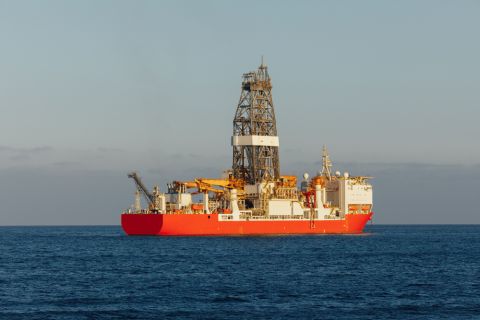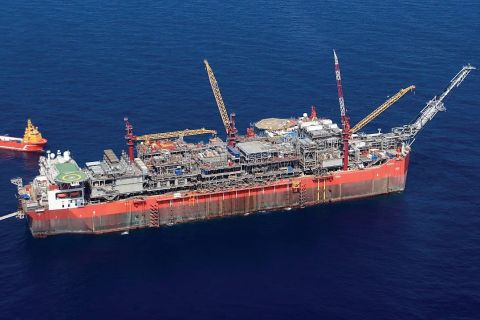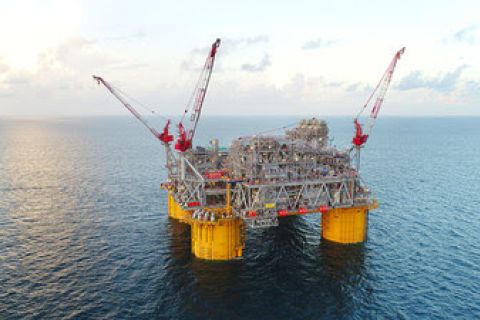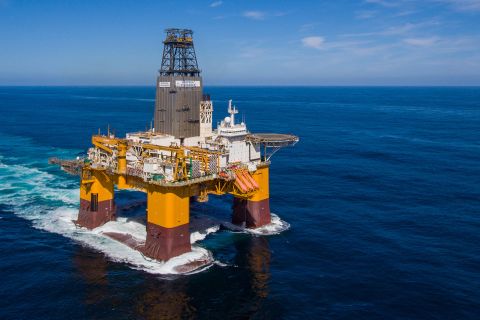One of Texas' oil and gas regulators on Feb. 18 defended the state's high rate of natural gas flaring, but named companies that burn off the most gas and said he would hold public meetings on the controversial practice.
Flaring, or deliberately burning gas produced alongside oil, has surged with crude production in Texas, but can worsen climate change by releasing carbon dioxide. The report includes a set of flaring and venting data to be updated quarterly, the first set of such data the state has released.
Ryan Sitton, one of three elected oil and gas regulators, said Texas' flaring intensity is lower than other oil-producing areas, including North Dakota, Iran, Iraq and Russia. Its flare volumes—around 650 million cubic feet per day in 2018—are "high for recent history" but do not surpass some years in the 1950s, according to Sitton's report.
"The state as a whole is still well below historical levels and most of the rest of the world," Sitton said in the report.
EP Energy Corp., Endeavor Energy Resources LP, Surge Operating and Jagged Peak Energy had the state's highest rates of "flaring intensity," a measurement of flaring volume against oil production, according to the report. The companies could not be reached immediately for comment, but Jagged Peak was recently purchased by Parsley Energy Inc., whose CEO has criticized Jagged Peak's high flaring rates.
Companies with the lowest flaring intensity in Texas included Pioneer Natural Resources Co., EOG Resources Inc., ConocoPhillips Co. and Chesapeake Energy Corp.
Oil drillers tend to flare or vent gas when they lack pipelines to move it to market, or prices are too low to make transporting it worthwhile.
Venting releases unburned methane, which is many times more potent than CO₂ as a greenhouse gas.
Texas regularly allows companies to burn or vent gas in excess of regulations. It has issued more than 35,000 flaring permits since 2013 and has not denied any, according to the state commission.
"Neither companies nor regulators have kept up with this challenge," said Colin Leyden, a policy advocate for the Environmental Defense Fund, which tracks flaring, adding "pointing fingers at Iran and Iraq does nothing to fix the problem."
In the Permian Basin underlying Texas and New Mexico, the largest U.S. shale basin, flaring and venting totaled about 293.2 billion cubic feet last year, according to state regulatory data compiled by independent energy researcher Rystad—up about 7% from 2018.
Recommended Reading
TotalEnergies Starts Production at Akpo West Offshore Nigeria
2024-02-07 - Subsea tieback expected to add 14,000 bbl/d of condensate by mid-year, and up to 4 MMcm/d of gas by 2028.
Seadrill Awarded $97.5 Million in Drillship Contracts
2024-01-30 - Seadrill will also resume management services for its West Auriga drillship earlier than anticipated.
Remotely Controlled Well Completion Carried Out at SNEPCo’s Bonga Field
2024-02-27 - Optime Subsea, which supplied the operation’s remotely operated controls system, says its technology reduces equipment from transportation lists and reduces operation time.
Shell Brings Deepwater Rydberg Subsea Tieback Onstream
2024-02-23 - The two-well Gulf of Mexico development will send 16,000 boe/d at peak rates to the Appomattox production semisubmersible.
Less Heisenberg Uncertainty with Appraisal Wells
2024-03-21 - Equinor proves Heisenberg in the North Sea holds 25 MMboe to 56 MMboe, and studies are underway for a potential fast-track tieback development.





